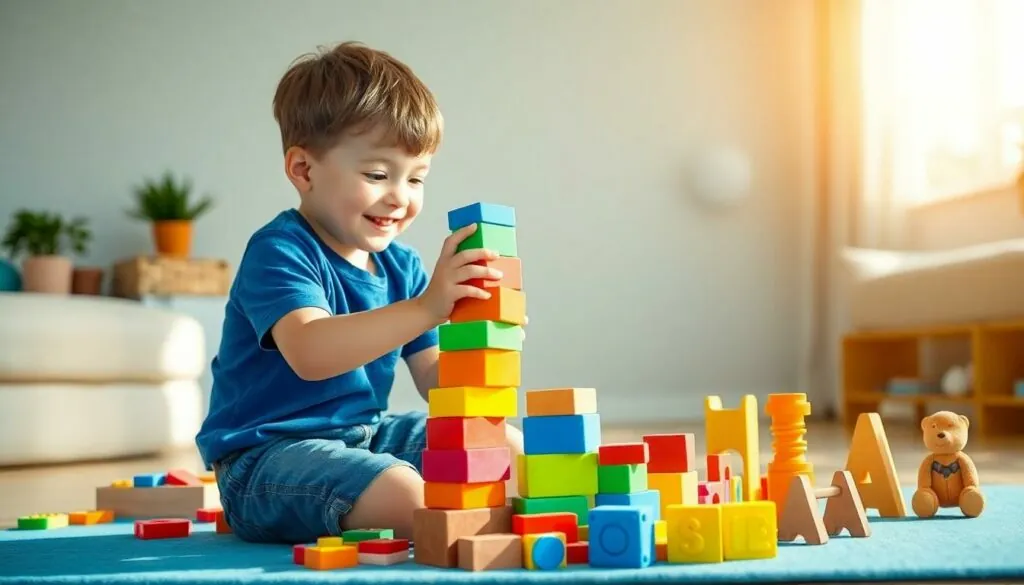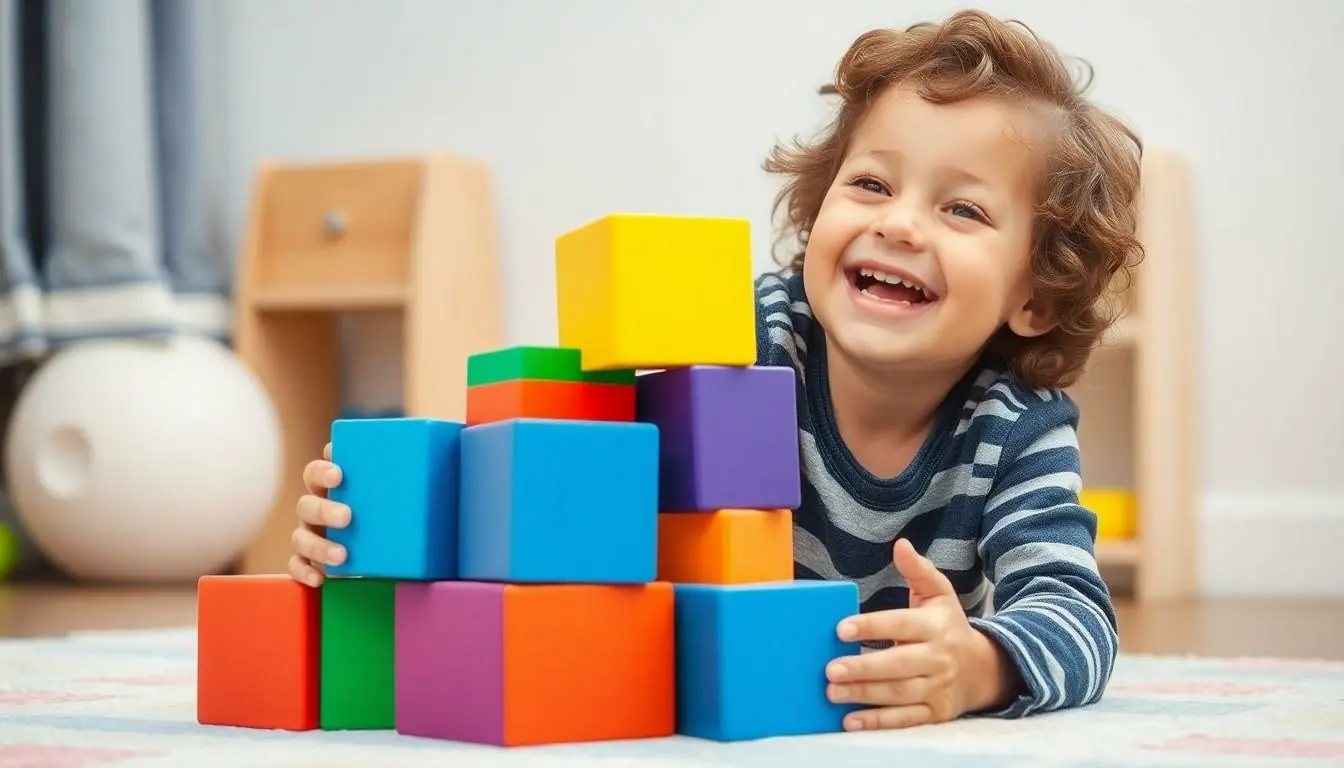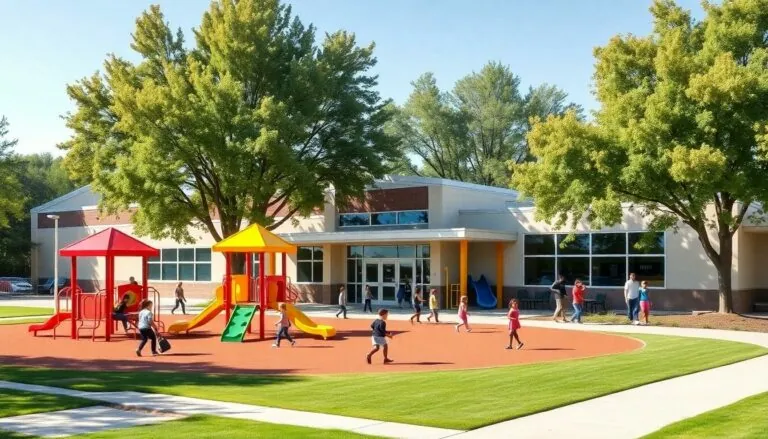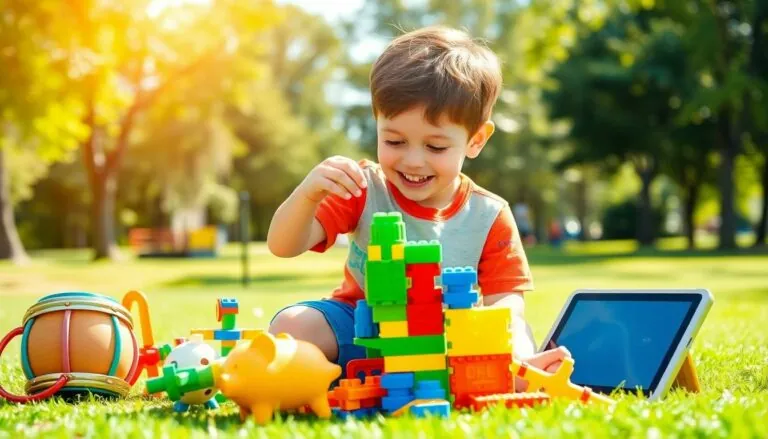Watching those tiny hands explore and learn is one of parenting’s greatest joys. Three-year-old boys are like little scientists – constantly curious and ready to discover the world around them. It’s the perfect age to introduce educational toys that’ll make learning feel like pure playground fun.
Finding the right educational toys for a three-year-old can feel overwhelming with countless options flooding the market. From building blocks that spark creativity to interactive gadgets that teach numbers and letters, each toy plays a crucial role in developing essential skills. The key is selecting toys that balance entertainment with educational value – because let’s face it, if it’s not fun, it’ll just collect dust in the toy box.
Table of Contents
ToggleUnderstanding Child Development at Age Three
Three-year-old children experience rapid development across multiple domains, marking a critical period for learning through play. Each developmental milestone creates opportunities for targeted educational activities that enhance growth.
Physical and Cognitive Milestones
Three-year-olds demonstrate enhanced motor skills through climbing stairs alternating feet climbing playground equipment pedaling tricycles. Their fine motor abilities include drawing circles stacking blocks up to 9 high gripping crayons with thumb finger control. Cognitive development shows through:
- Sorting objects by shape color size
- Counting to 10 recognizing some numbers
- Following 3-step instructions
- Understanding basic cause effect relationships
- Speaking in 4-6 word sentences
- Identifying major colors shapes
Social and Emotional Growth
Three-year-olds develop crucial social emotional skills that form the foundation for future relationships learning. Their expanding social awareness manifests in:
- Taking turns during group activities
- Expressing a range of emotions verbally
- Showing empathy when others are upset
- Engaging in imaginative play with peers
- Demonstrating independence in daily tasks
- Following simple rules guidelines
| Skill Area | Key Development Indicators |
|---|---|
| Physical | Balance coordination grip strength |
| Cognitive | Problem-solving memory language |
| Social | Cooperation sharing turn-taking |
| Emotional | Self-expression empathy regulation |
Best Building and Construction Toys
Building and construction toys enhance spatial awareness, problem-solving skills, and creative thinking in three-year-old boys while developing their fine motor skills. These toys provide hands-on learning experiences that keep toddlers engaged for extended periods.
Magnetic Building Sets
Magnetic building sets offer safe exploration of basic engineering concepts through colorful magnetic pieces that connect effortlessly. Sets like Magna-Tiles and Picasso Tiles feature large, durable pieces in geometric shapes that click together satisfyingly for young builders. The magnetic connection helps strengthen hand-eye coordination as pieces snap into place. Three-year-olds create simple structures like houses, towers, or vehicles using 20-30 pieces at a time. Premium sets include wheels, windows, doors to expand creative possibilities. Storage containers keep pieces organized between play sessions.
Large Building Blocks
Oversized foam or plastic building blocks provide the perfect foundation for early construction play. Blocks measuring 4-6 inches give small hands better control while stacking, sorting, and building. Sets of 40-50 pieces allow three-year-olds to build structures taller than themselves. Popular options include Mega Bloks, Soft Building Blocks, and Foam Blocks which feature non-toxic materials with rounded edges. The lightweight design prevents injury if blocks topple during enthusiastic play sessions. Different shapes, colors, and textures encourage sensory exploration alongside building skills.
Educational STEM Learning Toys
STEM toys introduce fundamental concepts in science technology engineering mathematics through hands-on exploration. These educational tools create engaging opportunities for three-year-old boys to develop critical thinking logical reasoning skills.
Early Math and Counting Games
Basic counting games establish essential mathematical foundations through interactive play. Number puzzles with large pieces help toddlers recognize numerals identify quantities up to 10. Sorting shapes games teach classification patterns while developing problem-solving abilities. Popular options include:
- Counting bears with matching cups for number recognition color sorting
- Stacking rings with numbers printed on each level
- Large wooden number puzzles featuring corresponding quantity illustrations
- Shape sorters combining basic geometry with counting activities
- Musical counting toys that reinforce numbers through songs rhymes
Simple Science Kits
Age-appropriate science kits spark curiosity through safe hands-on experiments. These kits introduce basic scientific concepts like cause effect color mixing magnets through structured play activities. Key features include:
- Color mixing sets with primary colored water droppers
- Magnetic wands with sorting objects to explore attraction
- Light-up discovery boxes demonstrating basic circuits
- Weather observation tools like child-safe thermometers rain gauges
- Simple mechanics toys demonstrating motion through ramps pulleys
Each kit contains durable plastic components sized appropriately for small hands. The activities focus on single-step experiments with immediate visible results fostering engagement concentration skills.
Creative Arts and Pretend Play
Creative arts and pretend play enhance imagination while developing fine motor skills in three-year-old boys. These activities foster self-expression through hands-on exploration of various materials and role-playing scenarios.
Art Supplies and Easels
Art supplies unlock creative potential in three-year-old boys through tactile exploration. Chunky crayons, washable markers, finger paints, play dough, and safety scissors provide essential tools for artistic expression. Double-sided easels with chalkboard and whiteboard surfaces create dedicated art spaces for drawing, coloring, and painting activities. Non-toxic modeling clay strengthens hand muscles while encouraging sensory development. Art smocks protect clothing during messy play sessions, teaching responsibility alongside creativity. Storage containers with separate compartments organize supplies, making cleanup part of the learning process.
Play Kitchen and Tool Sets
Play kitchens encourage imaginative play through realistic kitchen scenarios. Plastic pots, pans, plates, utensils, and play food items replicate real-world cooking experiences. Cash registers with toy money introduce basic counting concepts during pretend shopping. Tool sets with plastic hammers, screwdrivers, wrenches, and nuts foster problem-solving skills. Dress-up accessories like chef hats, aprons, tool belts create authentic role-playing experiences. Storage bins organize kitchen items by category, teaching classification skills. Wooden food sets with cutting boards allow safe chopping practice. Play kitchens with multiple stations enable collaborative play with siblings or friends.
Language Development Toys
Language development toys enhance communication skills through interactive play experiences that promote vocabulary growth speaking abilities. These specialized tools introduce new words concepts while making learning enjoyable for 3-year-old boys.
Interactive Books
Touch-and-feel books activate multiple senses through textured pages engaging young readers with various surfaces like fuzzy fur smooth silk rough sandpaper. Electronic sound books incorporate audio elements that pronounce words teach phonics pronounce animal noises when buttons are pressed. Pop-up books create three-dimensional scenes that spring to life encouraging spatial awareness story comprehension. Board books with lift-the-flap features reveal hidden pictures promote active participation in storytelling. Books with repetitive phrases rhyming patterns help children anticipate predict text elements building early reading confidence.
Letter Recognition Games
Magnetic letters stick securely to refrigerators magnetic boards allowing children to explore alphabet shapes through hands-on manipulation. Alphabet puzzle boards feature removable letters that fit into corresponding spaces reinforcing letter shape recognition. Electronic letter learning tablets light up play sounds when correct letters are identified providing instant feedback. Letter matching cards feature uppercase lowercase pairs strengthening visual discrimination skills. Alphabet blocks display letters pictures together creating connections between symbols objects. These games incorporate bright colors engaging graphics maintaining interest while building foundational reading skills.
Motor Skills Development Toys
Motor development toys strengthen physical coordination balance through engaging play activities. These toys support both gross motor abilities large muscle movements fine motor dexterity smaller muscle control.
Riding Toys
Riding toys enhance core strength balance coordination through active movement. Toddler tricycles with wide stable bases allow safe independent mobility while building leg muscles spatial awareness. Push cars with handles let children walk behind them developing gross motor skills stability. Rocking horses provide vestibular stimulation through gentle back forth motion improving balance sensory processing.
| Popular Riding Toy Types | Key Benefits |
|---|---|
| Tricycles | Balance, leg strength |
| Push cars | Walking stability |
| Rocking horses | Vestibular development |
| Ride-on scooters | Coordination |
Threading Sorting Activities
Threading sorting activities refine fine motor control hand eye coordination through precise movements. Lacing cards with oversized holes enable children to practice threading colorful laces through pre punched patterns. Stacking rings in size order develops visual discrimination motor planning. Sorting activities using large wooden beads colored blocks teach categorization while strengthening pincer grasp. Shape sorters with chunky geometric pieces enhance problem solving spatial recognition through tactile exploration.
| Activity Type | Skills Developed |
|---|---|
| Lacing cards | Fine motor, patterns |
| Stacking rings | Size sequencing |
| Bead sorting | Color recognition |
| Shape sorters | Spatial awareness |
Safe Shopping Guidelines
Educational toy safety requires careful attention to materials, construction quality and appropriate age recommendations. Parents benefit from understanding specific safety guidelines when selecting toys for 3-year-old boys.
Age-Appropriate Materials
Three-year-olds require toys made from durable non-toxic materials that withstand active play. Hard plastics, solid wood with smooth edges and thick cardboard provide safe options for this age group. Materials include:
- BPA-free plastic components that resist breaking
- Untreated natural wood finished with non-toxic paint
- Machine-washable plush toys with secure stitching
- Large parts measuring at least 1.75 inches in diameter
- Rounded edges without sharp points or corners
Safety Certifications
- ASTM F963: Testing for mechanical hazards like sharp edges
- EN71: European safety standards for toy construction
- CPSIA compliance: Lead content limits of 100 ppm
- CE marking: European conformity for toy safety
- ISO 8124: International standards for toy safety testing
| Certification | Testing Focus | Required Level |
|---|---|---|
| ASTM F963 | Physical Safety | Full Compliance |
| CPSIA Lead | Chemical Safety | <100 ppm |
| EN71 Parts 1-3 | Mechanical Safety | Pass All Tests |
Conclusion
Educational toys play a vital role in shaping a three-year-old boy’s developmental journey. By carefully selecting toys that combine learning with fun parents can create an enriching environment that supports their child’s growth across physical cognitive and social domains.
The right educational toys become powerful tools for learning offering opportunities to explore build create and discover. Whether it’s through building blocks art supplies or interactive books these carefully chosen playthings help lay the foundation for future academic success while keeping young minds engaged and entertained.
Remember that safety and age-appropriateness should always guide toy selection ensuring both an enjoyable and secure learning experience for every little explorer.






